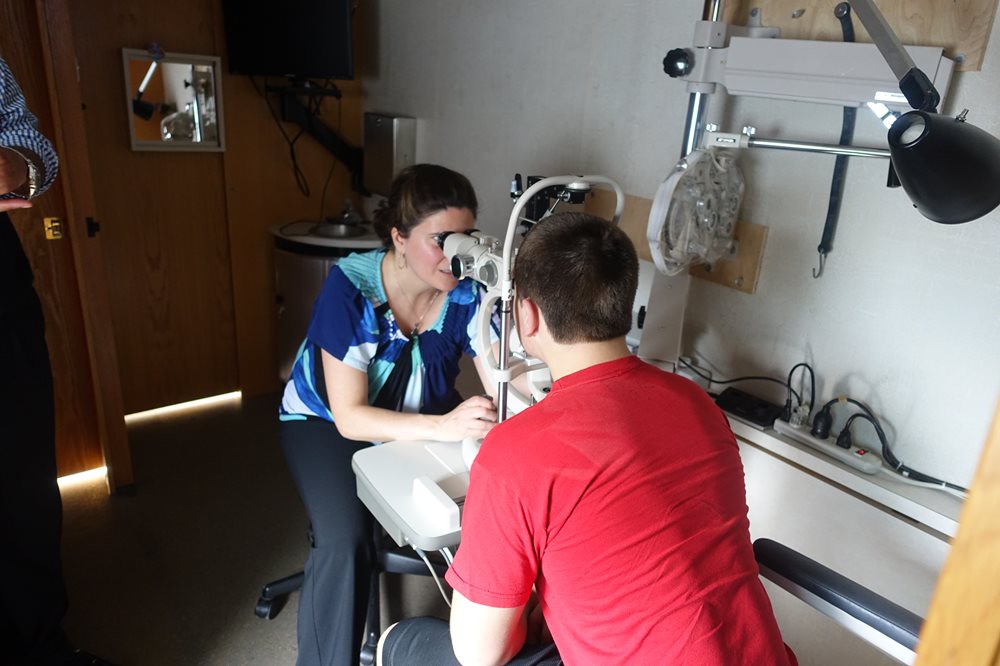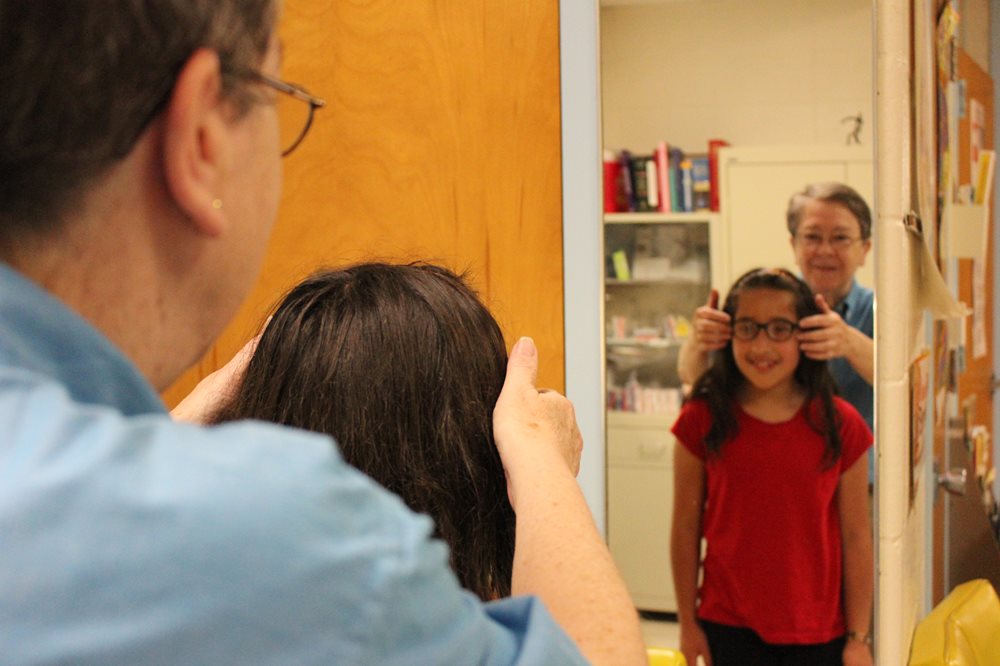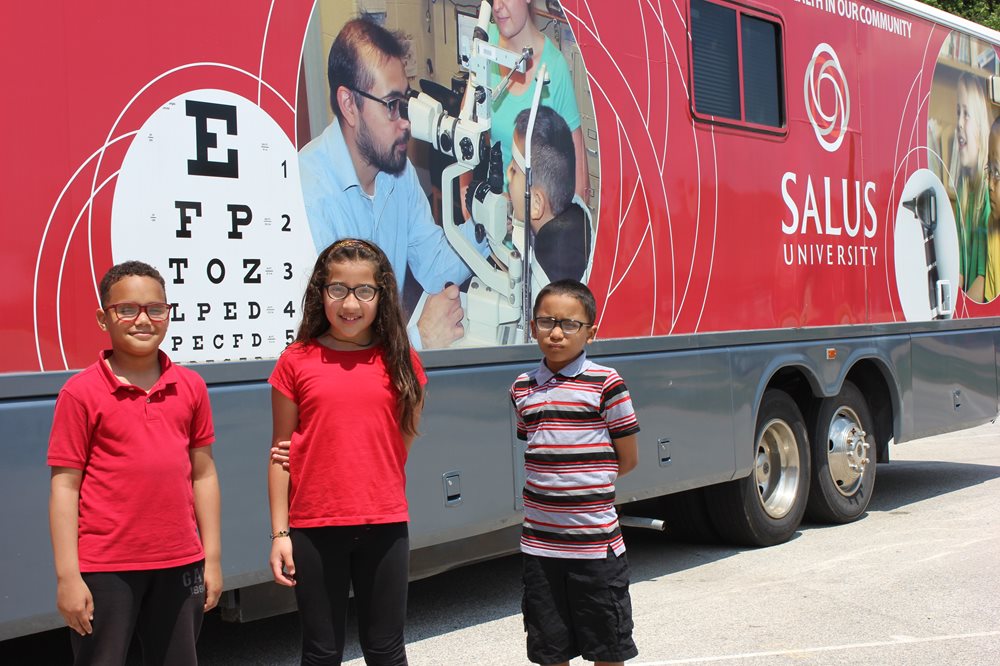End of School Year: School Vision Program Q&A
For decades, Salus University has been committed to providing comprehensive vision care services to disadvantaged children in Philadelphia and its surrounding communities. One in four children suffers from vision problems which can negatively impact their school performance and impede social development. Through its “Looking Out for Kids” (LOFK), vision care initiative, Salus University has brightened thousands of children’s lives by ensuring they receive the vision care necessary for their educational success.
Now that school's out, we thought it would be the perfect time to highlight a Q & A with Dr. Brandy Scombordi, assistant professor in the University’s Pennsylvania College of Optometry (PCO) and coordinator of the school vision programs at The Eye Institute, to learn more about what the school vision program does for students in our public schools.
 Q: Can you explain what The Eye Institute’s school vision program does?
Q: Can you explain what The Eye Institute’s school vision program does?
A: The school vision program that we run through The Eye Institute (TEI) is a vision program where we see underserved children in Montgomery County, Philadelphia County, Delaware County, and Bucks County. We're providing [vision] screenings to help the school nurses and we're providing eye exams - complete comprehensive eye exams.
Q: How exactly do you provide care to all these schools in different counties and districts?
A: We have three different modalities to providing care. One would be in the Norristown School District, and in Norristown, the school nurse screens the children, and then they identify a space within their school where we go and we set up a full examination lane. And, then the optometrist, a technician and interns will go out to the school in Norristown and provide care within the school.
The second is that we will, in Philadelphia County, go out and do screenings with the school nurse, and then those that had failed that screening [or the nurses’ screenings] will be bussed from their school, accompanied by the nurse and a chaperone to one of the three clinical facilities.
Q: What's on the inside of the van?
A: The vision van is a full operating exam lane. So we have an exam chair, phoropter, microscopes, everything we need to do an exam. And, then on the other side, we have optical, so that the child can sort of go shopping for their new glasses - they walk through and they pick out their glasses and they're fitted for their glasses.
Q: Great. And, do they get to take them home immediately?
A: They don't get them immediately in all three programs. It takes about a week to have the glasses made, but we do make them onsite at The Eye Institute. And, then the glasses are delivered by an optician or a technician in about a week. They get two pairs, one pair that the school nurse will keep on site in case they lose their glasses or break their glasses, and then one pair that they take home.
 Q: What's the age group that you serve?
Q: What's the age group that you serve?
A: When we first started the program, we were really unsure of which age group to start with. So we really just focused on kindergarten through fifth and sixth grade. We have found that the need continues all through, and that high schoolers, before applying to college and taking their SATs, that it's important that they see as well. So we've expanded. Now it's from kindergarten through 12th grade for the school vision program. We do have other programs that service preschool age children, but it's not part of this program.
It would be worth it to mention that children over the age of one and under 18 months should have their eyes examined. Anyone, any child starting school between the ages of three and five should have at least one eye exam. And, then children should always have an eye exam before they start school, and then annually, because as they grow, their eyes change shape, and that may change how they see.
Q: So for children who don't normally go get eye exams on a regular basis, what can they expect if this bus shows up at their school?
A: They can expect to have fun in the bus, because we try to make it fun, but they just come into the bus and they're checked in at the front, at the little area in the front, and then just a regular eye exam. Their visual acuity is checked. Their eye teaming skills, their eye tracking skills, just to make sure that they're reading properly in school, their focusing skills and then their eye health.
Q: When did the school vision program begin, and how has it changed over the past couple of years?
A: The program began in the 1990s, and that was just in Philadelphia, where we bussed the children into The Eye Institute from the local schools. It's morphed over that time. The Norristown schools, I believe, began about nine years ago under the direction of Dr. Susan Oleszewski, and that was a pilot, I think, in 2012-2013 academic year. 2015 was when we began using the Salus van to go out into the schools in the other counties.
Q: Wow. So, when did you start at Salus?
A: I started at Salus PCO in 1998 as a resident. So, that's how I worked with it in the beginning. And, then I've been in and out of the program over the last 20 years. But I have been the coordinator of the program for the last two and a half years.
Q: What do you think the school vision program will look like in the next five years?
A: We are always asked to expand and other districts are always coming to us. So we will need to expand. We've been asked to go to a school in Bucks County. This past year we expanded to Souderton School District. We've been adding different districts as it goes, and as that happens, we need to expand, because we need more staff. But in addition to that, we're going to need a new vision van. So I think that we could be more efficient by introducing a new van.
 Q: What kind of impact does this program have on the community that you've seen, in your experience?
Q: What kind of impact does this program have on the community that you've seen, in your experience?
A: I feel like everyone benefits when we take care of our children, but always when your child can see properly at distance and at near, and their eyes are focusing and teaming, they're going to perform better in school. And, children that perform better in school are more successful in life, and then that leads to a better life for them and for our entire communities. So, I think that's the benefit of the program.
I think that sometimes we take it for granted because we live in our nice homes, and then when you see these children and what they have and what they don't have, it's overwhelming. So in some cases, I mean, it's just crazy the things that we have seen out there. I've seen children who can't see past 12 centimeters. They can't see past 12 centimeters in front of them, and they're trying to pay attention to their teacher and look at the blackboard, and they can't do that. And, then we've seen some serious diseases, keratoconus that was undiagnosed in a 13-year-old who had never had an eye exam.
Q: What is that exactly?
A: Keratoconus is a degeneration of the cornea of someone's eye, and if untreated, it can lead to blindness. So, it was a very serious thing to catch in a vision van.